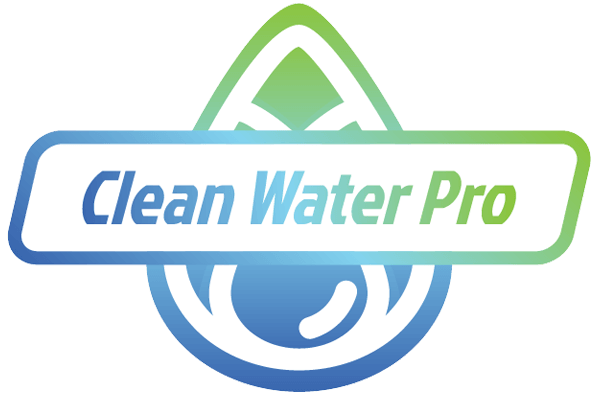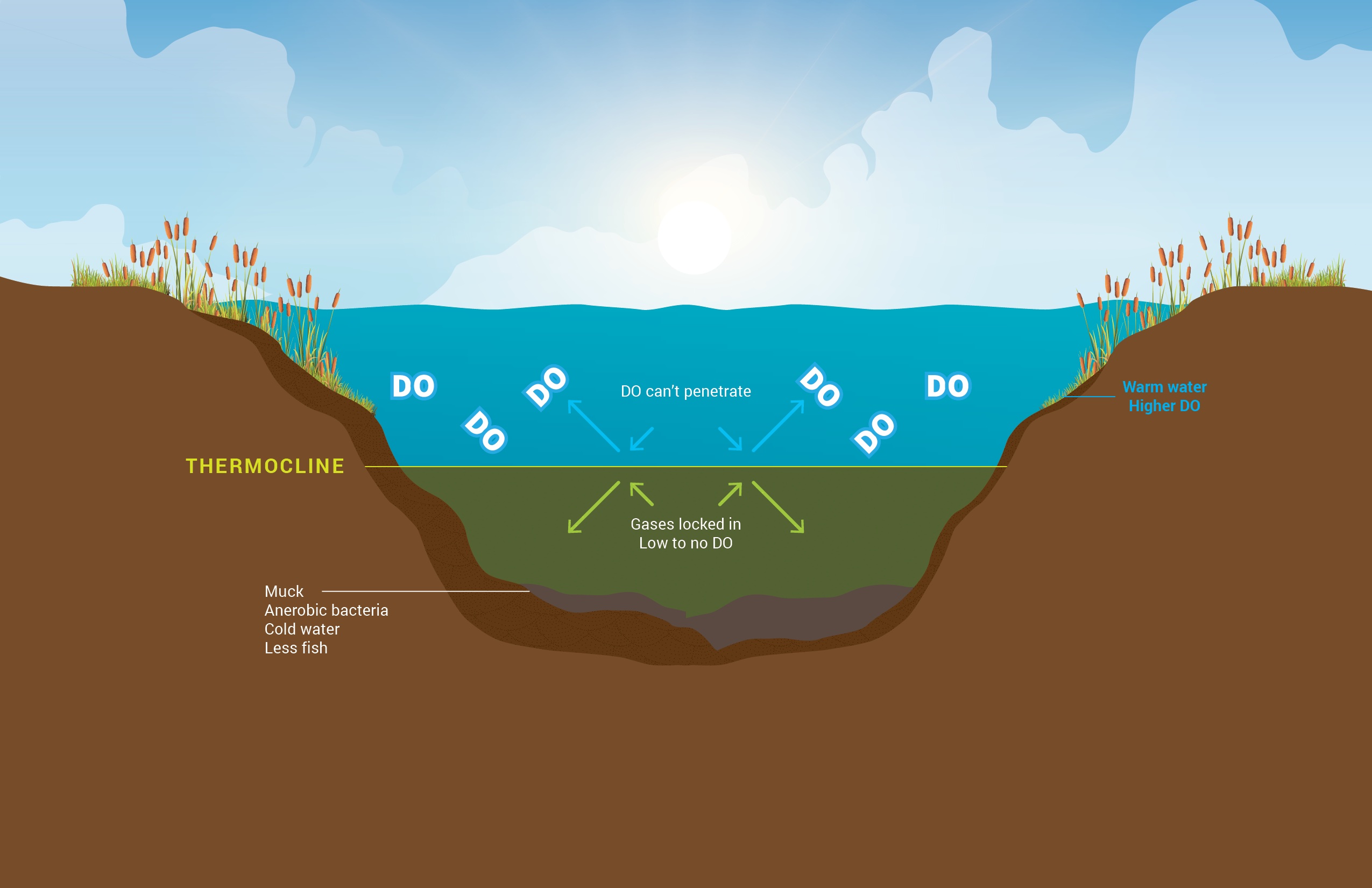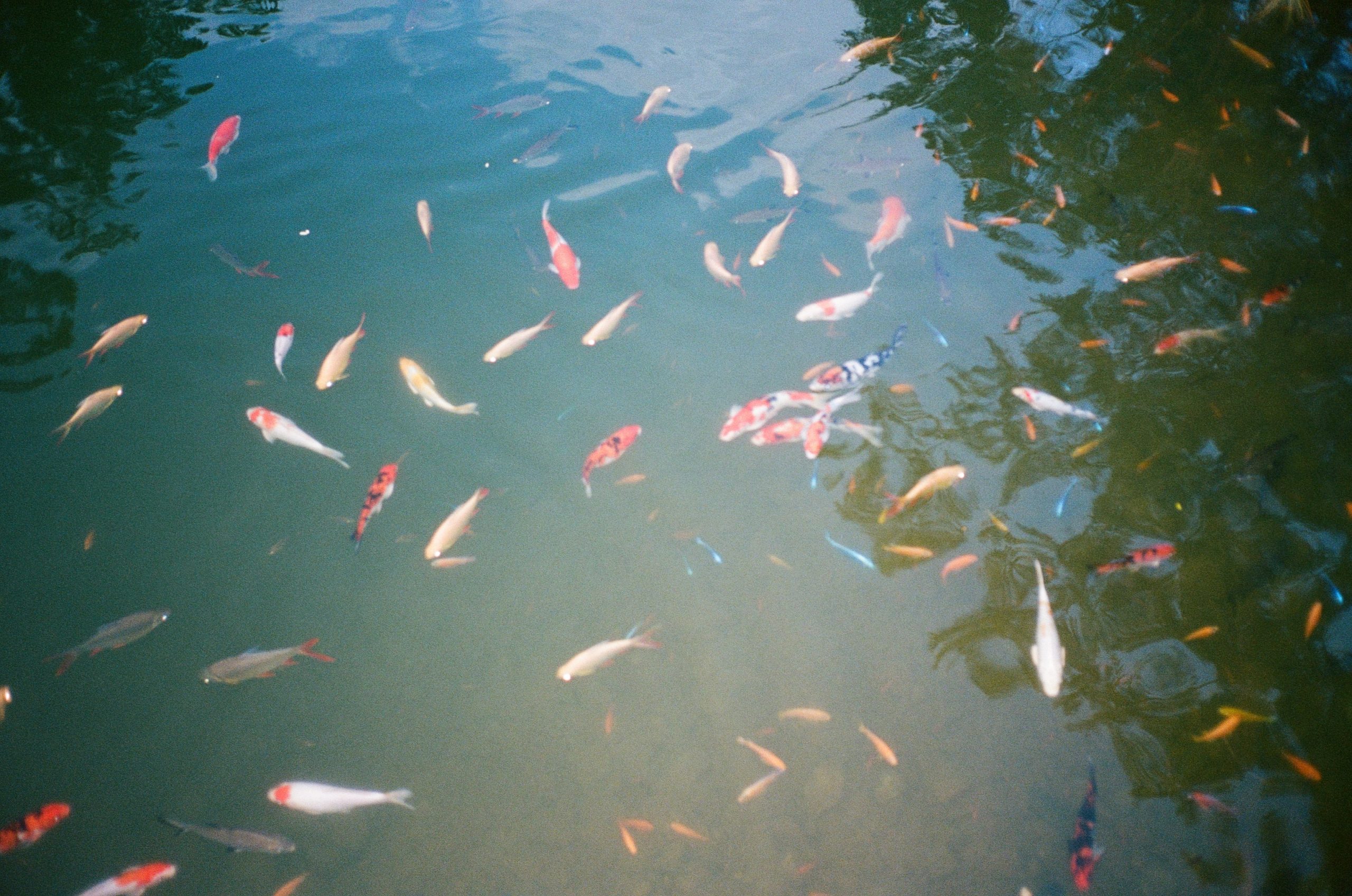How Does Thermocline Affect Your Pond, Lake, and Fish?
Water is essential for all of the life we know. Our earth has water on top of the solid rock, which makes our planet habitable. The transition layer from the top, warm water into the colder bottom water is known as the “thermocline.”
The thermocline is a layer of water between the surface and the bottom of the water body. The temperature of this layer changes throughout the day as the sun heats the upper layers of the water.
This article will explain how the thermocline occurs and how it affects your pond or lake.
What Is A Thermocline?
A thermocline is a distinct layer between warmer mixed water at the top and cooler water at the bottom of a water body.
For example, a lake’s thermocline divides the upper mixed layer from the calm, deeper water below. The thermocline boundary is where the temperature begins to drop sharply. Below this layer, the temperature drops until it reaches the coldest part of the lake.
What Causes A Thermocline?
The sun heats a water body’s surface, which is the initial cause of a thermocline. Water near the bottom remains colder as sunlight doesn’t penetrate enough, so the temperature decreases gradually towards the bottom.
When there are no clouds, the sun’s rays hit the surface directly, causing the water to heat up quickly. As soon as the sun sets, the water cools down again.
As the sun rises in the morning, the surface water warms up again, and the process repeats itself.
How Does Thermocline Affect Fish?
Fish live in the upper layers of water bodies, with higher dissolved oxygen levels. It’s optimal for a fish’s health to stay closer to the water’s surface.
However, the deeper waters are cooler and have less oxygen. Fish swimming too far down may suffocate because they lack oxygen.
Fish must balance where they are in the water body to find food to eat and enough dissolved oxygen to thrive.
Does Thermocline Exist Under the Ice?
Fall is much more severe than Spring. During fall, the thermocline will affect the pond worse as it moves closer to the surface. Suppose the large volume of water below the thermocline lacks dissolved oxygen. In that case, this water gets mixed into the rest of the pond, decreasing dissolved oxygen levels throughout the entire water column.
In the winter, the thermocline becomes even more important when ice forms on lakes and rivers. Because the ice covers the whole surface of the water, the thermocline moves higher up in the water level, especially if the water body is eutrophic and consuming lots of dissolved oxygen.
The ice layer will also decrease the water’s dissolved oxygen in winter. Toxic gases can also get trapped under the ice, creating a dangerous environment for fish. This combination of low dissolved oxygen levels and toxic gases trapped underneath the ice can lead to fish kill when the ice melts in the spring.
However, the fish under the ice can still survive because they don’t need to go very deep into the water, provided enough dissolved oxygen is available. Most fish populations move to areas with openings in the ice because more dissolved oxygen is available where there are holes.
Creating an opening in the ice’s surface using lake or pond aeration increases dissolved oxygen and allows toxic gasses out of the water. Without an opening, your fish could be at risk. Our water experts wrote a blog discussing: What is Winter Fish Kill? How Can You Prevent It?
The Bottom Line
The thermocline plays an important role in ponds, lakes, and dugouts. It’s distinguishable where the temperature difference between the warmer top layer of the water and the colder bottom water.
The thermocline creates an invisible barrier that prevents gasses from exiting the bottom layer of the water and prevents dissolved oxygen from entering the top layer.
If the thermocline becomes wider (moving up in the water column), it decreases the amount of dissolved oxygen available in the upper layer of the water column. Adding fine bubble aeration is the best way to eliminate the thermocline and increase dissolved oxygen throughout the water column.



